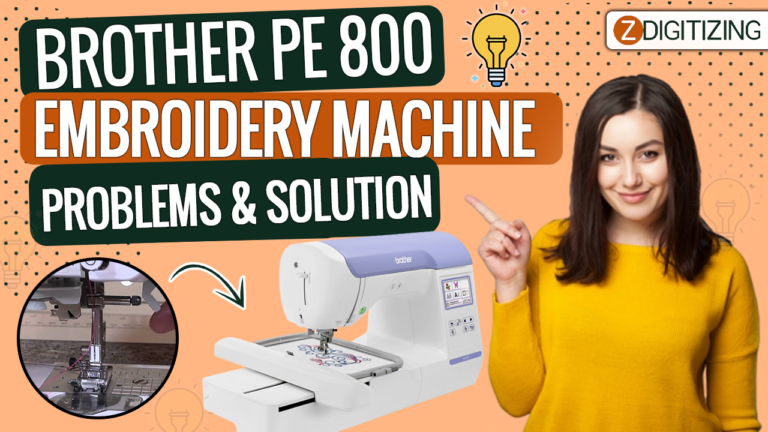
Choosing The Right And Best Fabric For Embroidery Machine?
Selecting the right fabric is a critical decision when it comes to machine embroidery. The choice of fabric can significantly impact the outcome of your embroidery project, affecting the quality of the design, the ease of the process, and the overall appearance. In this comprehensive guide, we will explore the factors to consider when choosing the ideal fabric for your embroidery machine. Additionally, we’ll discuss the significance of digitizing services for embroidery, converting pictures to embroidery, and free embroidery designs in enhancing your embroidery experience.
The Importance of Choosing the Right Fabric
Embroidery is an art that thrives on precision. Whether you’re working on a personal project or creating embroidered items for commercial purposes, your choice of fabric is paramount. The fabric you select should complement the design, provide a stable surface for embroidery, and ensure that the final product meets your expectations.
Factors to Consider When Choosing Fabric
Before diving into the fabric options, it’s important to consider several factors that can influence your choice:
1. Fabric Type
The type of fabric you choose will determine the outcome of your embroidery. Common options include cotton, linen, silk, denim, wool, and various synthetic blends. Each fabric type has its unique properties and texture.
2. Fabric Weight
The weight of the fabric refers to its thickness and heaviness. Lighter fabrics are often used for delicate or intricate designs, while heavier fabrics can support more substantial or textured embroidery.
3. Fabric Color
The color of the fabric can affect the visibility and vibrancy of the embroidered design. Light-colored fabrics work well for dark or bold designs, while dark fabrics enhance light or pastel-colored embroidery.
4. Fabric Texture
The texture of the fabric can add depth and dimension to the embroidered design. Consider whether you want a smooth, uniform surface or a textured, woven look.
5. Fabric Stability
The stability of the fabric is crucial for maintaining the integrity of the design during and after embroidery. Ensure the fabric remains flat and doesn’t stretch or distort during the process.
Best Fabrics for Machine Embroidery
Now, let’s explore some fabric options that are well-suited for machine embroidery:
1. Cotton
Cotton is a popular choice for machine embroidery due to its softness, breathability, and versatility. It works well for a wide range of designs and is available in various weights, from lightweight cotton voile to heavy denim.
2. Linen
Linen fabric has a unique texture and a natural, rustic appearance. It’s ideal for designs that require a classic or vintage look. Linen may require extra stabilizer to prevent excessive fabric movement during embroidery.
3. Silk
Silk is a luxurious and delicate fabric suitable for high-end embroidery projects. It adds an elegant sheen to the design, making it perfect for decorative items like silk scarves or eveningwear.
4. Denim
Denim is a robust and durable fabric that can handle more substantial and textured embroidery. It’s commonly used for customizing jeans, jackets, and other casual wear.
5. Wool
Wool fabrics are known for their warmth and texture. They are an excellent choice for embroidery projects that require a cozy, tactile finish.
6. Synthetic Blends
Synthetic blends, such as polyester-cotton blends, are often chosen for their durability and colorfastness. These fabrics work well for designs that require vibrant and long-lasting colors.
Digitizing Services for Embroidery: Enhancing Your Designs
When it comes to embroidery, the quality of the design file is as important as the fabric itself. Digitizing services for embroidery play a significant role in ensuring your design files are well-prepared and optimized for your machine. A well-digitized design reduces the likelihood of design-related issues and results in a cleaner and more professional outcome.
Converting Pictures to Embroidery and Free Embroidery Designs
Converting pictures to embroidery is an exciting way to add a personal touch to your projects. Whether you want to incorporate photographs or intricate illustrations, this process allows you to bring a unique visual element to your embroidery. Additionally, free embroidery designs can serve as inspiration or components to enhance your projects, saving you time and effort in the design process.
Conclusion: Elevating Your Embroidery Projects
Selecting the ideal fabric for your embroidery machine is a vital step in ensuring the success of your projects. The fabric you choose should align with your design’s requirements, your desired aesthetic, and the intended use of the final product.
Remember that the significance of digitizing services for embroidery, converting pictures to embroidery, and the use of free embroidery designs should not be underestimated. These resources can help you bring your vision to life and elevate your embroidery experience to new heights. So, choose your fabric wisely, prepare your design thoughtfully, and watch as your embroidery projects transform into stunning works of art.



